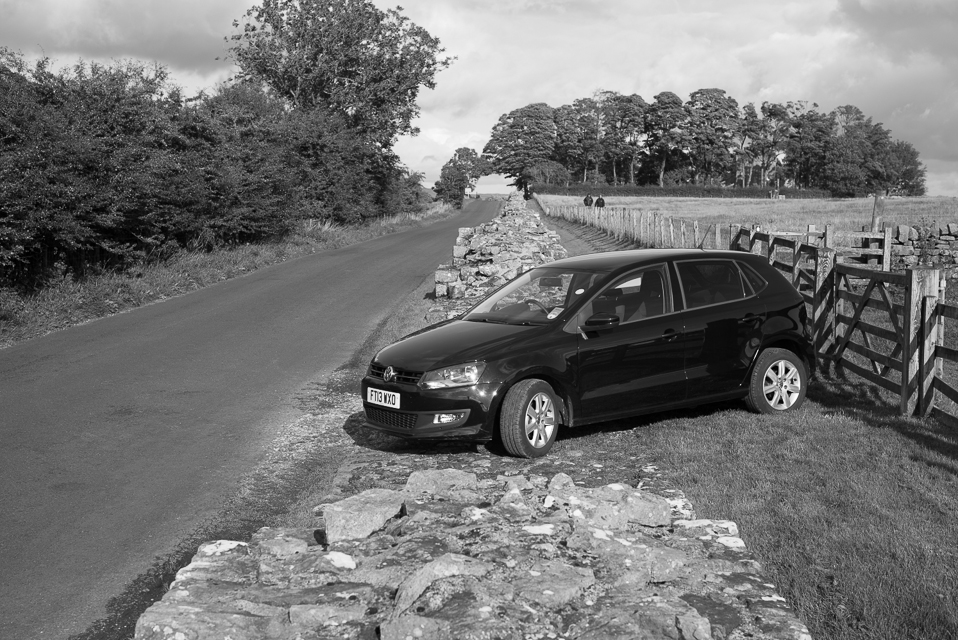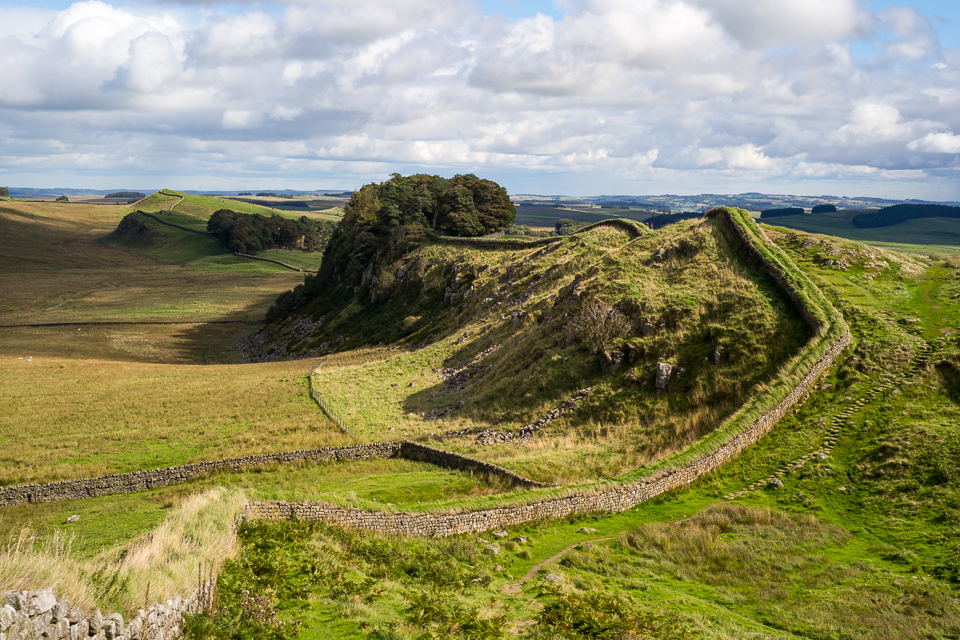 Hadrian’s Wall extends from coast to coast, and this part of the wall at Cawfields Crags is the best preserved section of the wall remaining to us. Why did Hadrian build his walls?
Hadrian’s Wall extends from coast to coast, and this part of the wall at Cawfields Crags is the best preserved section of the wall remaining to us. Why did Hadrian build his walls?
With the foundation of the empire, Augustus would define boundaries that are mostly recognisable for the next 4 centuries as the nominal size and shape of the Roman Empire: the Atlantic to the north west, the Rhine and Danube rivers along the northern frontier, the north of Africa to its south, Armenia and the coastal states of the Eastern Mediterranean along its East.
While Augustus had originally desired the Elbe River as Rome’s northern boundary, the Germanic tribes were to prove more resistant and troublesome than he had anticipated, particularly evident with the defeat of the legions in the battle of Teutoburg Forest, with his oft-quoted refrain, “Quintilius Varus, give me back my legions”. With this defeat, Rome’s geographic extent in the north was to reach a boundary of the Rhine River that it would defend and maintain until the eventual collapse of the western empire in the 5th century.
The Emperor Caligula, seeking legitimacy and a victory worthy of an Emperor (and self-declared god), set off against the Germans, and had an ambition to take the British Isles. He fought mightily against the god Poseidon along the coast line facing the English Channel, with his legions attacking the water and sent to gather seashells. As a result of these truly extraordinary campaigns, he declared a great victory over this wrathful and most menacing of gods and the shells were brought back to Rome and displayed as booty and evidence of this great triumph.
On a more serious note, the bumbling and oft-derided, “Uncle Claudius”, who took up the mantle of Emperor following the assassination of Caligula, was to campaign in the British Isles in 43CE, and would bring the southern part of the island under Roman authority, establishing the province of Brittania. Claudius would also be hailed as a God by the Brits for his achievement and Roman rule begun on the Isles first explored by Julius Caesar’s expeditions in 55 and 54BCE.
Over the ensuing decades the Romans solidified their position over the British Provence, governing the southern part of the Isle, the area today generally defined as England. It was a prosperous and reasonably stable province during this period.
Rome entered its golden age of the five great emperors (96 – 180CE), which Edward Gibbon would characterise as the best of times for human society and civilisation. The second of these five emperors was Trajan. Trajan was a military prodigy and was to greatly expand the boundaries of the empire both to the north along (and beyond) the Danube frontier, and to the East, eventually reaching the Persian gulf, having brought the whole region of Mesopotamia under Roman aegis. When Trajan died, in 117CE, Rome was to have, however temporarily, its greatest geographical extent.
Hadrian was Trajan’s adopted heir, and upon taking the mantle of authority in 117, was to act decisively to reduce and stabilise the boundaries of the empire. He withdrew from much of the eastern conquests of Trajan, and solidified the regions beyond the Danube. He would lay the foundation of an empire that truly had a discernible and seemingly natural extent; his sense of what was a plausible and governable space was extraordinarily perceptive.
He was to travel the entirety of the empire twice, in two tours of approximately 8 years each. During these tours, taking in the border provinces as well as the more luxurious or central provinces, he would strengthen the garrisons, check on the fitness and appropriate deployments of the troops, and the soundness of the defences. One of his greatest discernible legacies was the building of various walls along the boundaries that would define the Roman control and governance. “Hadrian’s Wall” in England was one such; not the largest or longest (that privilege belongs to a wall built to defend the Rhine river frontier near the city of Cologne), but a wall that has become the most famous and recognisable monument to this legacy.
The northern and western tribes of the Britannia Isles, today’s Scotland and Wales respectively, were to prove as resistant to Roman rule, and as problematic as the Germanic tribes. With Hadrian’s first visit the decision was taken to build a wall across the breadth of the Isle, construction of which began in 122CE. The wall would separate the northern from the southern regions; that area south of the wall, Roman, that area beyond the wall, Barbarian, that is, “not-Roman” peoples.
The purpose and intention of these walls are twofold, and do imply a more subtle reasoning behind their construction than may be at first obvious. The obvious conclusion for these walls is that they are purely defensive; you have a wall, you garrison it, and your soldiers stand with spears and other implements of defence, and hurl these upon any encroaching barbarian who would venture too close to the sacrosanct boundary of the empire.
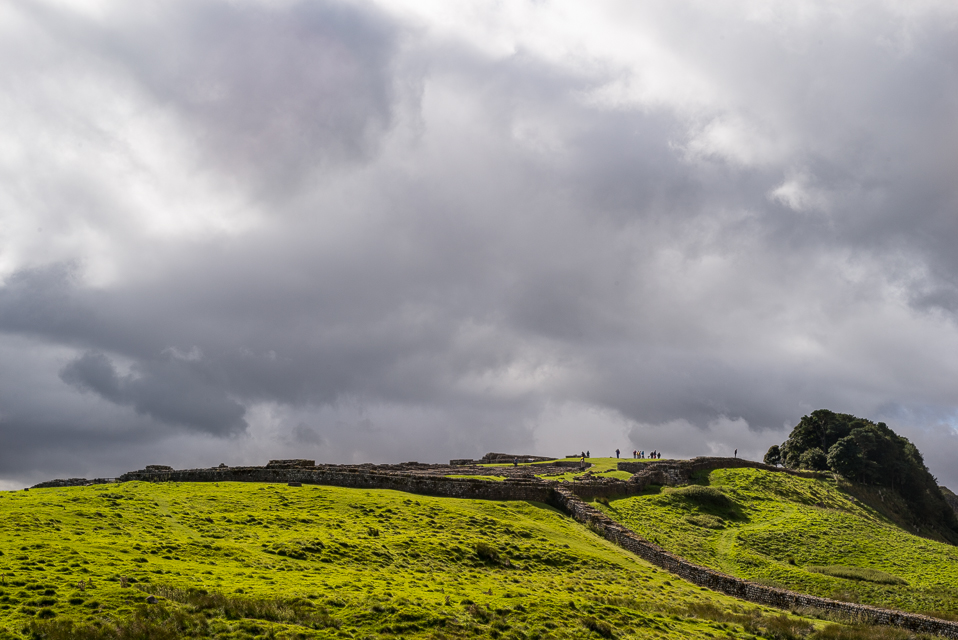
Yet, there is a more interesting reason to have these walls; for sure the barbarian tribes are problematic, raiding citizen’s properties close to these boundaries, and so forth, and indeed their first intention is to limit and impede these sorts of incursions. They also serve however, to allow the Romans to control the traffic between their lands, to monitor (and control) the movements of citizens, and barbarians, across these frontiers. It wasn’t that the walls defined an empire that shut itself off from its surrounds, it wasn’t an empire that closed down, or turned inwards, to deny and disregard the life and societies beyond its bounds. Rather, one of its great strengths was the ability to assimilate the peoples not only those that it conquered, but also those within the general vicinity of its space. Participation in Roman life was not so much denied, but defined and controlled by a Roman authority that sought to protect and maintain the integrity of its governance. The walls allowed for a control and regulation of trade, of the levying of entrance taxes or fees for goods traversing the boundaries of the empire in more peaceable times, and a general monitoring of the movements of people across its boundaries.
So, the building of the walls by Hadrian can be seen to have two purposes, firstly to generally define the areas under which the Romans were to exert a direct governance, and secondly to control and to mediate the movements and interactions between those tribes or regions where those peoples were known to be problematic or resistant to Roman governance. The empire was not surrounded by walls, but rather small and strategic areas were chosen to render manageable the defence of the realm in those areas, particularly where no natural terrain would securely serve such a purpose.
Hadrian’s wall in England was started in 122CE, during Hadrian’s first visit to the province. It was completed 6 years later. The wall was about 128km long, spanning the entire Island from coast to coast, from today’s Newcastle-Upon-Tyne in the east, past Carlisle in the west to the sea. The wall was as high as 6 metres in places, and about a metre wide at its base. The wall’s sides were compromised of finished, cut stone (these are not the rough-shod walls of “the dark ages”). In addition, there were ditches, grass walls, and various fortifications along the course of the wall. To form an understanding of how significant a work this is, on average, over 21 kms of wall were built in a year, roughly 80 metres of wall a day. This would also have to include the additional construction of the fortifications dotted along the wall, such as the Birdoswald and Housesteads forts as pictured below, the mile-forts (a small building attached to the wall that was used to hold troupes built roughly every mile across the entire length of the wall) and other earth works. And then, you have holidays to take into account. The wall was the work of 3 legions (about 15,000 men).
After Hadrian, the Antonine wall was built (about 120kms north of here), but the use of that wall was short-lived, and Hadrian’s wall was to become the main northern fortification for the duration of the Roman’s tenancy in Britain. It would be a centre of cultural and military activity for the remainder of that time, until with the overall decline of the Western empire, the Romans left the British Isles in 383CE, 260 odd years after the construction of the wall was completed.
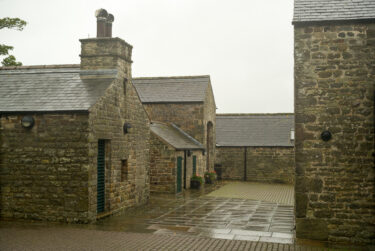
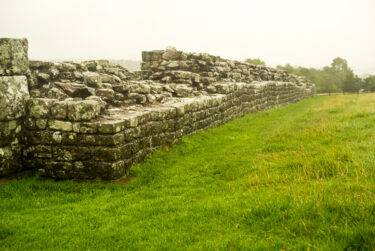
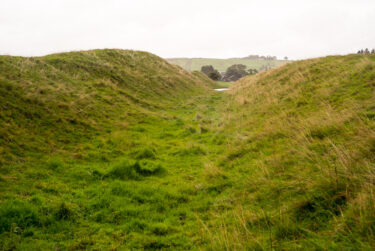
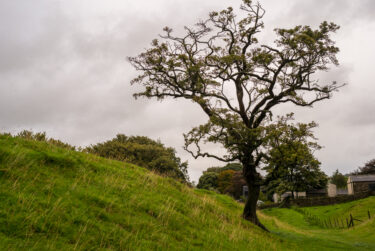
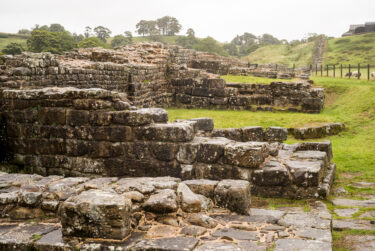
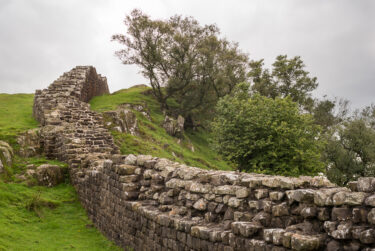
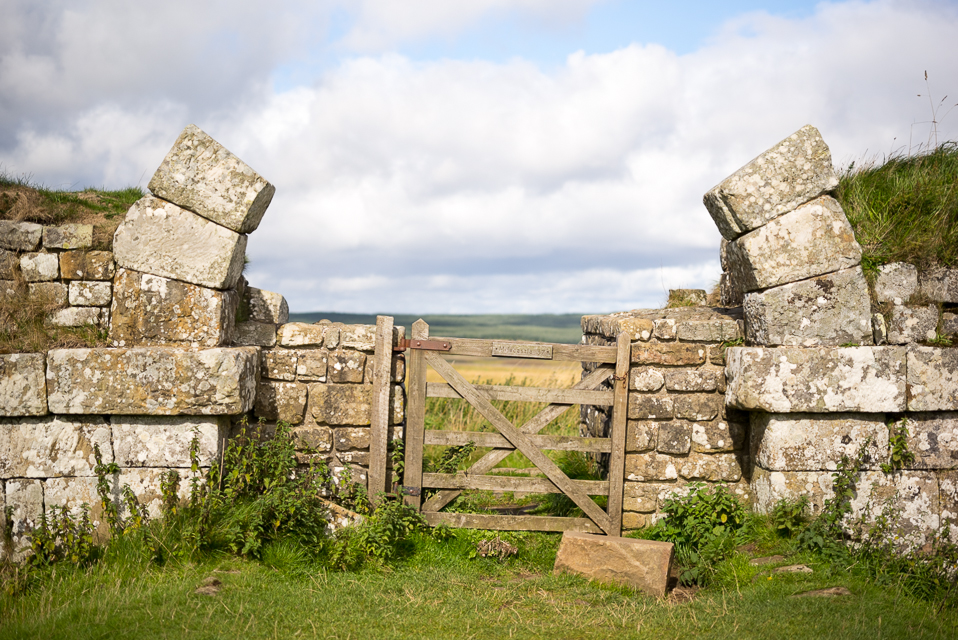
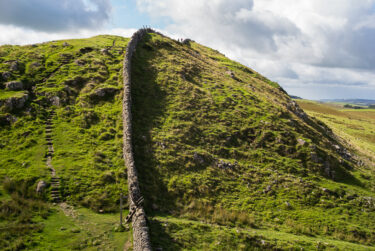
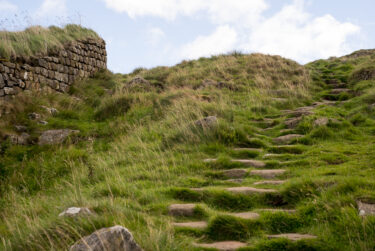

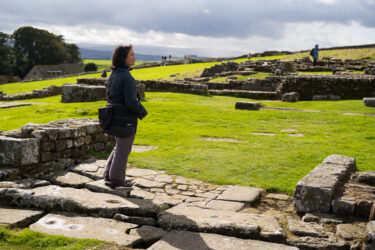
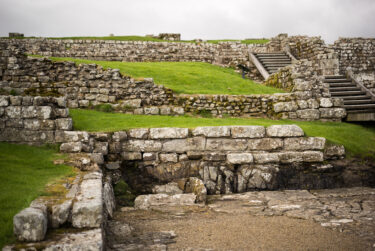
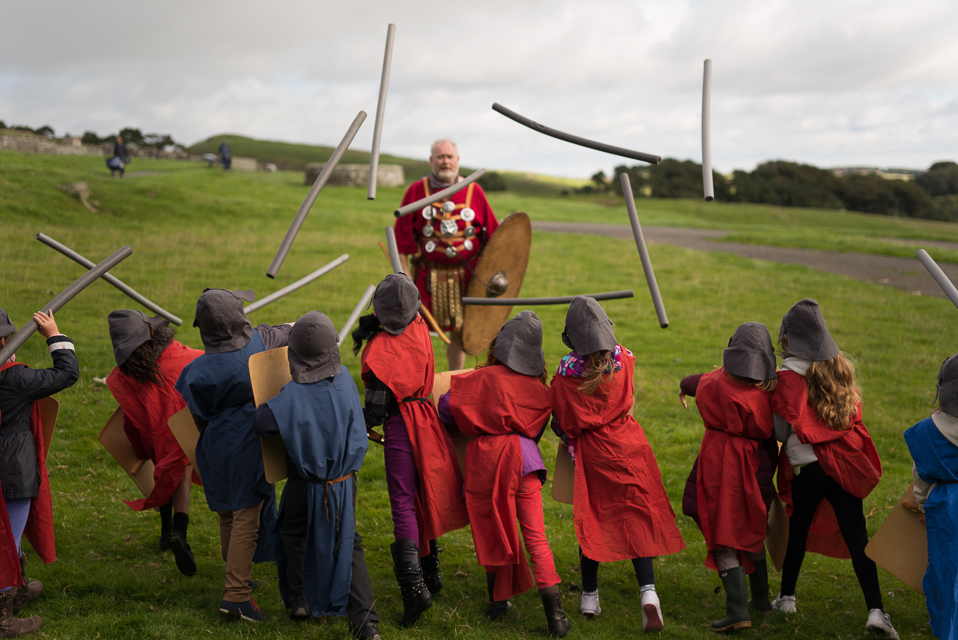
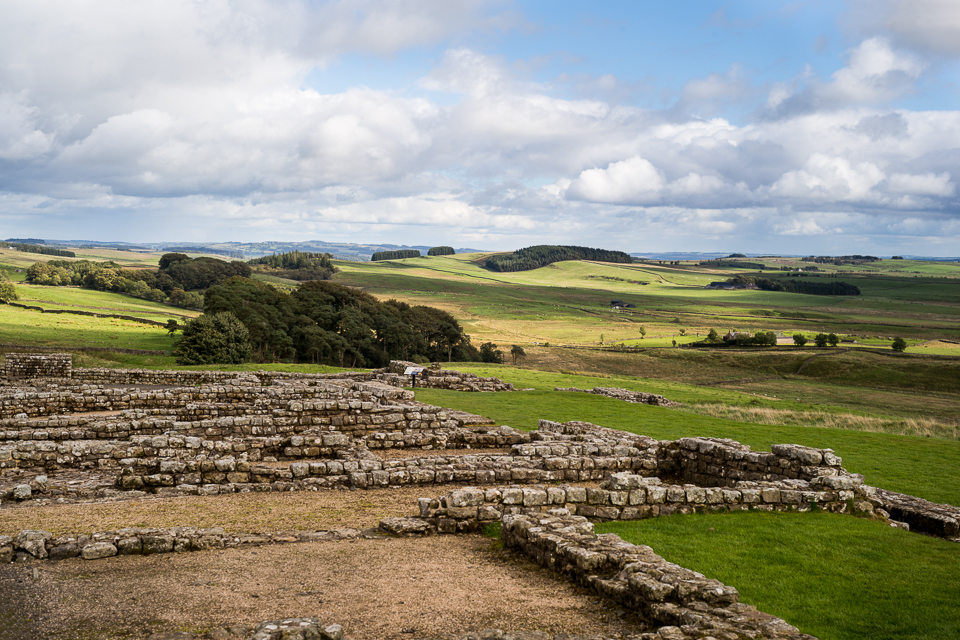
Postscript.
Yes, I have parked a car on Hadrian’s Wall! No disrespect intended, and no I won’t disclose the location. Now, to find a spot to park a car on Theodosian’s Walls (but that’s another tale to be told).


